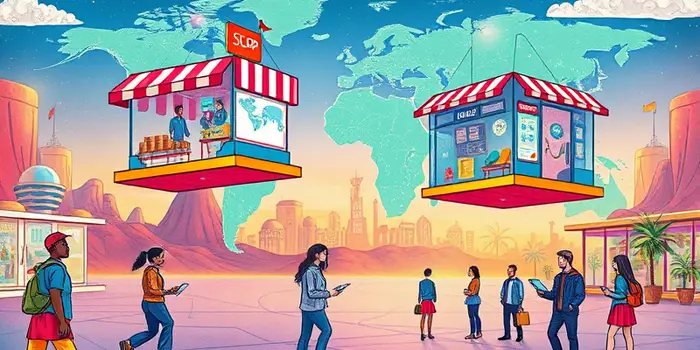
In the last decade, digital markets have transformed the way consumers discover, purchase, and engage with products. From bustling online marketplaces to independent boutiques powered by innovation, the e-commerce revolution is an unstoppable force reshaping retail and investment landscapes.
As an entrepreneur, investor, or curious observer, understanding the trends, technologies, and strategies fueling this growth empowers you to capitalize on opportunities and mitigate risks.
Global e-commerce sales are projected to reach between $6.88 trillion and $8.3 trillion in 2025, marking more than 55% growth since 2021. This expansion reflects how digital channels now account for over one-fifth of worldwide retail sales, a share expected to rise to 22.6% by 2027. By 2030, e-commerce could top $8.91 trillion, underscoring the sector's robust momentum.
Regionally, China leads with 52% of global sales, followed by the United States at 16% and Western Europe at 12%, together representing 80% of digital commerce. In the US alone, e-commerce sales are set to hit $1.47 trillion in 2025, comprising 18.6% of total retail and aiming to exceed $2.5 trillion by 2030.
The digital shopper is more empowered than ever. Over 2.77 billion people shop online, representing a third of the global population. Mobile devices drive over 70% of digital purchases, while digital wallets facilitate more than half of all transactions.
Modern consumers demand speed, security, and effortless experiences. Reviews influence 99% of purchase decisions, and more than half explore products across borders. Weekly browsing habits are common, with 34% shopping online at least once per week.
Platforms such as Shopify, Etsy, and Amazon FBA have lowered entry barriers across platforms, enabling millions of small businesses to reach global audiences. On the operational side, AI-powered logistics and automation tools streamline fulfillment, reduce costs, and improve delivery times.
Personalization engines analyze browsing patterns to recommend products, while augmented reality (AR) lets customers virtually try items before buying. These technologies enhance engagement and conversion rates, setting new standards for competitive advantage.
For investors seeking robust returns, e-commerce offers a wealth of strategic entry points. The B2B market alone is valued at $32.11 trillion with a 14.5% CAGR, presenting massive scope beyond consumer retail.
Supply chain and logistics technology is a prime target. As global trade expands, solutions that optimize warehousing, last-mile delivery, and cold-chain management become invaluable. Similarly, niche marketplaces and specialty retailers carve profitable segments in wellness, sustainable goods, and custom crafts.
While entry is easier than ever, heightened competition demands differentiation through branding, service excellence, and operational finesse. Platform fees, data security, and complex international logistics pose ongoing challenges.
Brands committed to ethical and sustainable practices stand out as consumers increasingly value environmental and social responsibility. Implementing circular economy principles, reducing packaging waste, and supporting fair labor give businesses a competitive edge.
The digital frontier continues to expand. Direct-to-consumer (DTC) models will proliferate, enabling brands to own customer relationships and boost margins. Mobile-first strategies, AR-enhanced shopping, and voice commerce will further personalize experiences.
As e-commerce evolves into a multi-trillion-dollar ecosystem, opportunities abound for entrepreneurs, investors, and innovators. Whether you aim to launch a niche store, invest in cutting-edge logistics, or harness AI for personalization, the time to act is now.
By understanding consumer expectations, leveraging emerging technologies, and committing to sustainable practices, you can build a resilient digital venture or portfolio. Embrace the momentum, stay agile, and craft your share of the e-commerce empire of tomorrow.
References













